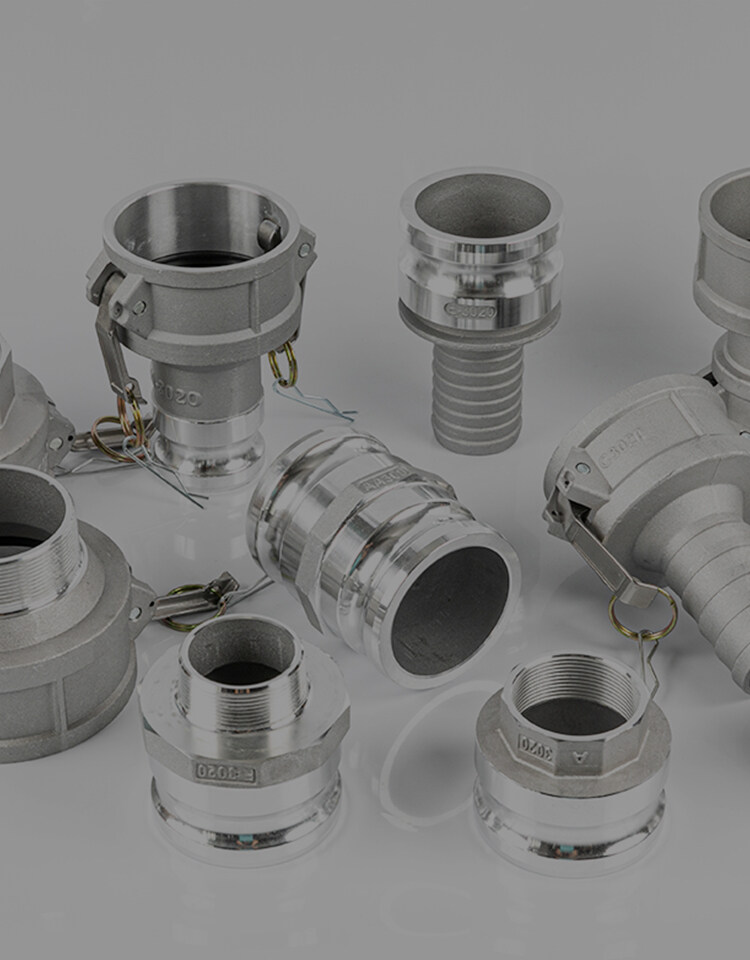이메일 형식 오류
emailCannotEmpty
emailDoesExist
pwdLetterLimtTip
inconsistentPwd
pwdLetterLimtTip
inconsistentPwd

소식
여기에서 표현하려는 텍스트를 설명 할 수 있습니다.

The Art of Precision: Crafting the Perfect Custom Coupling Nut for Your Project
In the intricate world of mechanical engineering and construction, the coupling nut is a small yet essential component that often goes unnoticed. These nuts are used to join two pieces of threaded rod or to extend the length of a thread, playing a crucial role in various construction and industrial applications. However, when unique challenges arise that off-the-shelf components cannot address, the custom coupling nut becomes the hero of the day. This post is dedicated to the art and science behind custom coupling nuts, exploring the process of creating custom shaft couplings, the advantages of custom rubber couplings, and the critical nature of a robust coupling nut supply chain.
Understanding Custom Coupling Nuts:
A custom coupling nut is a fastener tailored to meet specific requirements that standard coupling nuts cannot fulfill. These nuts are designed with particular dimensions, materials, and thread patterns to suit unique applications, providing solutions where unusual lengths, non-standard thread sizes, or special material properties are needed. Custom coupling nuts are indispensable when standard sizes fail to deliver the necessary strength, precision, or aesthetic value for a project.
The Process of Creating Custom Shaft Couplings:
Similar to custom coupling nuts, custom shaft couplings are engineered to connect two shafts for power transmission while accommodating misalignment and minimizing vibration. The creation of custom shaft couplings involves a comprehensive analysis of the application, including factors such as torque requirements, shaft dimensions, and environmental conditions. Engineers collaborate with clients to develop a coupling that meets mechanical specifications and fits within the spatial constraints of the machinery.
The Role of Custom Rubber Couplings:
Custom rubber couplings fall into a specialized category of components designed for applications that demand flexibility, shock absorption, and noise reduction. These couplings are crafted from various rubber materials, each chosen for its resilience against different temperatures, chemicals, and abrasion. Custom rubber couplings are commonly employed in systems such as pump connections, motor mounts, and vibration dampening assemblies.
The Importance of a Reliable Coupling Nut Supply Chain:
A reliable coupling nut supply chain is vital for manufacturers and end-users. It ensures the availability of necessary components, keeping projects on track and minimizing downtime. A robust supply chain is characterized by consistent quality, on-time delivery, and the capacity to provide custom solutions promptly as project specifications evolve.
Collaboration with Coupling Nut Factories:
The production of custom coupling nuts requires collaboration with specialized factories equipped with advanced machining technology. These facilities can produce nuts in a variety of sizes, materials, and finishes, adhering to the precise specifications of each custom order. The partnership between manufacturers and factories is crucial for upholding quality standards and expanding the possibilities of custom fastening solutions.
Custom Couplings: Beyond Standard Solutions:
Custom couplings represent innovation and engineering excellence. They address unique challenges that standard solutions cannot, providing tailored performance. Whether it’s a custom coupling nut designed for extreme environments or a custom shaft coupling for high-torque applications, these bespoke components are engineered to deliver superior results.
Choosing the Right Materials for Custom Coupling Nuts:
Understanding the Application Requirements
Before selecting a material for a custom coupling nut, it’s essential to have a comprehensive understanding of the application’s requirements. Factors to consider include:
Load Requirements: The material must withstand the mechanical loads it will encounter, including tensile, shear, and compressive forces.
Environmental Conditions: Exposure to elements such as water, humidity, chemicals, and extreme temperatures can influence material choice.
Corrosion Resistance: In environments prone to corrosion, materials with inherent corrosion resistance or those that can be treated for protection are preferred.
Magnetic Properties: Certain applications may require non-magnetic materials to avoid interference with sensitive instrumentation or equipment.
Electrical Conductivity: For electrical applications, the material’s ability to conduct or insulate electricity is a significant consideration.
Industry Standards: Compliance with industry-specific standards and regulations may dictate the use of particular materials.
Common Materials Used in Custom Coupling Nuts
Several materials are commonly used in the production, each offering distinct advantages and properties:
Stainless Steel: Known for its corrosion resistance and strength, stainless steel is a popular choice for coupling nuts used in harsh environments. It is available in various grades, with 304 and 316 being the most common for their balance of corrosion resistance and affordability.
Carbon Steel: Carbon steel provides high strength and is often used in structural applications. It can be heat-treated to increase hardness and is typically coated or plated to enhance corrosion resistance.
Alloy Steel: Alloy steels are carbon steels with additional alloying elements such as chromium, molybdenum, and nickel. These elements improve the material’s mechanical properties, making it suitable for high-stress applications.
Brass: Brass is an alloy of copper and zinc, offering good corrosion resistance and electrical conductivity. It is commonly used in electrical and plumbing applications where non-magnetic and non-sparking properties are required.
Aluminum: Lightweight and corrosion-resistant, aluminum is ideal for applications where weight reduction is a priority. It is also non-magnetic and has good thermal and electrical conductivity.
Titanium: Titanium offers an exceptional strength-to-weight ratio and excellent corrosion resistance. It is often used in aerospace, medical, and marine applications where durability and performance are critical.
Nylon and Other Plastics: For applications requiring electrical insulation or where metal is not suitable, plastics such as nylon can be used. These materials provide good resistance to corrosion and wear while being lightweight.
Advanced Material Treatments and Coatings
In addition to selecting the right base material, the nuts can undergo various treatments and coatings to enhance their properties:
Galvanization: A zinc coating applied to steel to prevent rust.
Anodizing: An electrochemical process that thickens the natural oxide layer on the surface of aluminum parts, increasing corrosion and wear resistance.
Black Oxide: A conversion coating for steel that provides mild corrosion resistance and reduces light reflection.
Teflon Coating: A non-stick, low-friction coating that can also provide chemical resistance.
Design Considerations for Custom Coupling Nuts:
Analyzing the Application’s Demands
The first step in designing a custom coupling nut is to thoroughly analyze the application’s demands. This includes understanding the mechanical and environmental stresses the nut will face, such as:
Load and Stress Distribution: Determine the types of loads (axial, radial, torsional) and their magnitudes to ensure the nut can withstand them without failure.
Vibration and Fatigue: Assess the potential for vibrational stresses that could lead to fatigue and premature failure.
Temperature Extremes: Consider the operating temperature range and the material’s ability to maintain its properties under these conditions.
Chemical Exposure: Identify any chemicals or corrosive substances the nut may be exposed to and select materials accordingly.
Thread Considerations
The threads are a critical aspect of the coupling nut’s design, as they are the primary means of achieving a secure mechanical connection. Important thread considerations include:
Thread Size and Type: Choose the appropriate thread size and type (UNC, UNF, metric, etc.) based on the rods or components being connected.
Thread Fit: Decide on the class of fit for the threads, which determines the tightness or looseness of the fit between the nut and mating threads.
Thread Direction: For certain applications, left-handed threads may be required instead of the standard right-handed threads.
Material Selection
The choice of material for a custom coupling nut is influenced by the application’s requirements and the desired properties, such as:
Strength and Hardness: Select a material with sufficient strength and hardness to handle the loads and wear.
Corrosion Resistance: Choose materials that resist corrosion if the nut will be exposed to harsh environments.
Weight Considerations: In applications where weight is a concern, lighter materials like aluminum or titanium may be preferred.
Dimensional Attributes
The physical dimensions of the coupling nut must be carefully considered to ensure proper fit and function:
Length-to-Diameter Ratio: The length-to-diameter (L/D) ratio affects the nut’s ability to distribute loads and accommodate misalignment.
Hex Size: The hex size should be compatible with standard tools for ease of installation and removal.
End Chamfer or Radius: Adding a chamfer or radius can facilitate easier starting of the nut onto threads and reduce the risk of cross-threading.
Additional Features
Custom coupling nuts can incorporate additional features to enhance their functionality:
Locking Mechanisms: Features such as nylon inserts or deformed threads can provide a locking action to prevent loosening due to vibration.
Surface Treatments: Coatings or platings can be applied to improve corrosion resistance, reduce friction, or provide a desired finish.
Identification Markings: Custom markings or stamps can be added for identification, traceability, or to denote special characteristics.
Quality and Testing
Ensuring the quality of the custom coupling nut is paramount, and this involves:
Prototyping: Create prototypes to test the design under simulated or actual service conditions.
Inspection and Testing: Implement rigorous quality control measures, including dimensional inspections and material testing.
Certification: Obtain necessary certifications or compliance with industry standards, if required.
Quality Control in the Production of Custom Coupling Nuts:
Quality control is paramount in the production. Manufacturers enforce rigorous inspection protocols at each production stage, from raw material sourcing to the final product check. This ensures that every custom coupling nut meets the highest standards of accuracy and quality, instilling confidence in the mechanical connections they secure.
Conclusion:
Custom coupling nuts, along with custom shaft couplings and custom rubber couplings, are vital for projects requiring exceptional precision and customization. These components result from collaboration among clients, engineers, and coupling nut factories, all striving to produce solutions that address specific challenges. With a dependable coupling nut supply chain and a commitment to quality, the nuts can significantly enhance the performance and reliability of any project. As the demand for tailored mechanical solutions continues to rise, the expertise in crafting the perfect custom coupling nut will remain a crucial aspect of the industrial and construction sectors.

